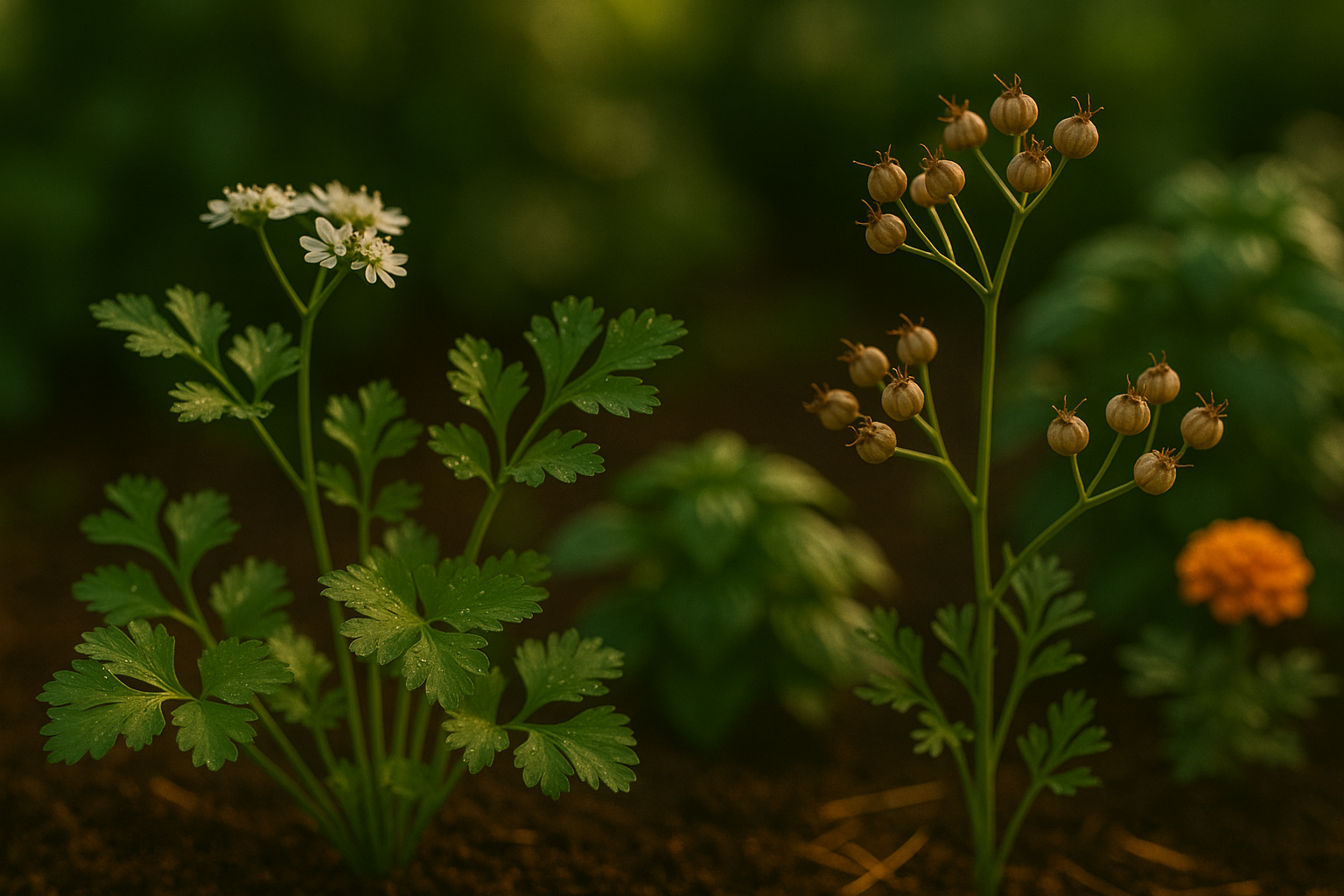Why Save Coriander Seeds?
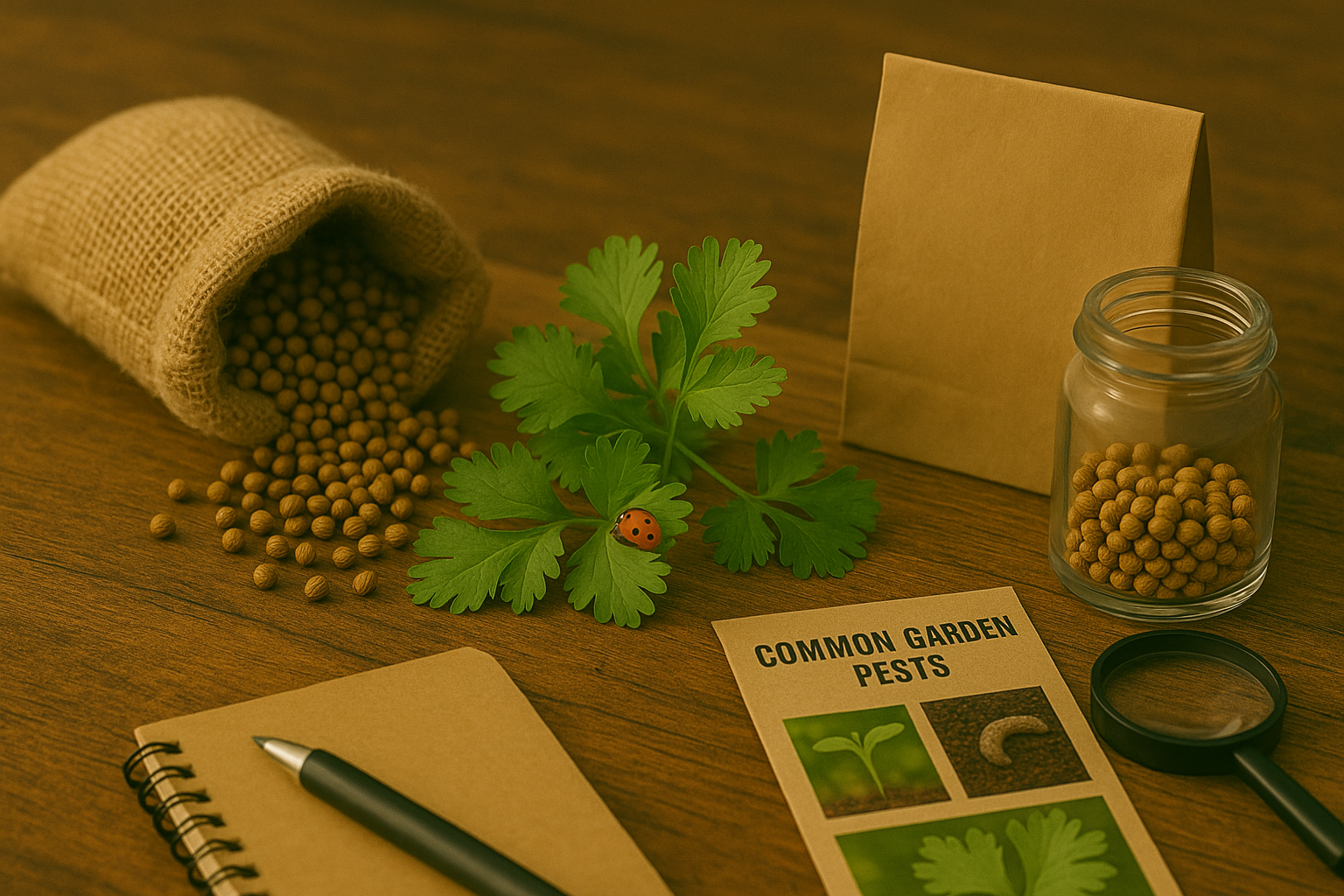
Coriander is a versatile herb that offers two valuable harvests from a single plant: the fresh, citrusy leaves known as cilantro and the warm, nutty seeds called coriander. Saving coriander seeds is an easy way to make your gardening efforts more sustainable, extending your harvest beyond just one season and reducing the need to buy new seeds each year.
Collecting and using your own seeds also helps you preserve unique plant varieties and the distinctive flavors that store-bought seeds sometimes lack. Plus, the cost savings add up quickly, as a small handful of seeds goes a long way both in the garden and the kitchen.
Home-saved seeds can be replanted for the next crop, ground into aromatic spice blends, or used whole in cooking to enhance curries, breads, and pickles. Additionally, saving and sharing seeds with friends helps build a rich tapestry of homegrown flavors and ensures your favorite coriander varieties continue to thrive.
For gardeners and home cooks alike, saving coriander seeds is a simple step that delivers big rewards.
Knowing When to Harvest Coriander Seeds
Coriander seeds come from the same plant we know as cilantro, but figuring out exactly when to harvest them takes a bit of observation. As your cilantro matures, it will eventually start “bolting”—shooting up a tall central stalk and bursting into delicate white or pale pink flowers.
Once pollinated, these flowers form small green, round seed pods. At first, the pods are soft and tightly clumped, but over the next few weeks, they swell and gradually change color. Watch closely: when the seeds shift from bright green to a beige or light brown, it’s a sign they’re nearing maturity.
At this stage, the whole plant often looks dry and faded, with yellowing leaves and brittle stems. Another reliable clue is aroma—the seeds will begin to release the distinct, citrusy scent characteristic of coriander.
Harvesting too early leaves you with green seeds that lack full flavor, while waiting too long means the dry pods might split and scatter, leaving you empty-handed. For best results:
- Cut seed heads once most pods have browned but before they start dropping.
- Place them upside down in a paper bag to catch any loose seeds as they finish drying—a simple trick that saves your harvest from going to waste.
Step-by-Step Guide to Collecting Coriander Seeds
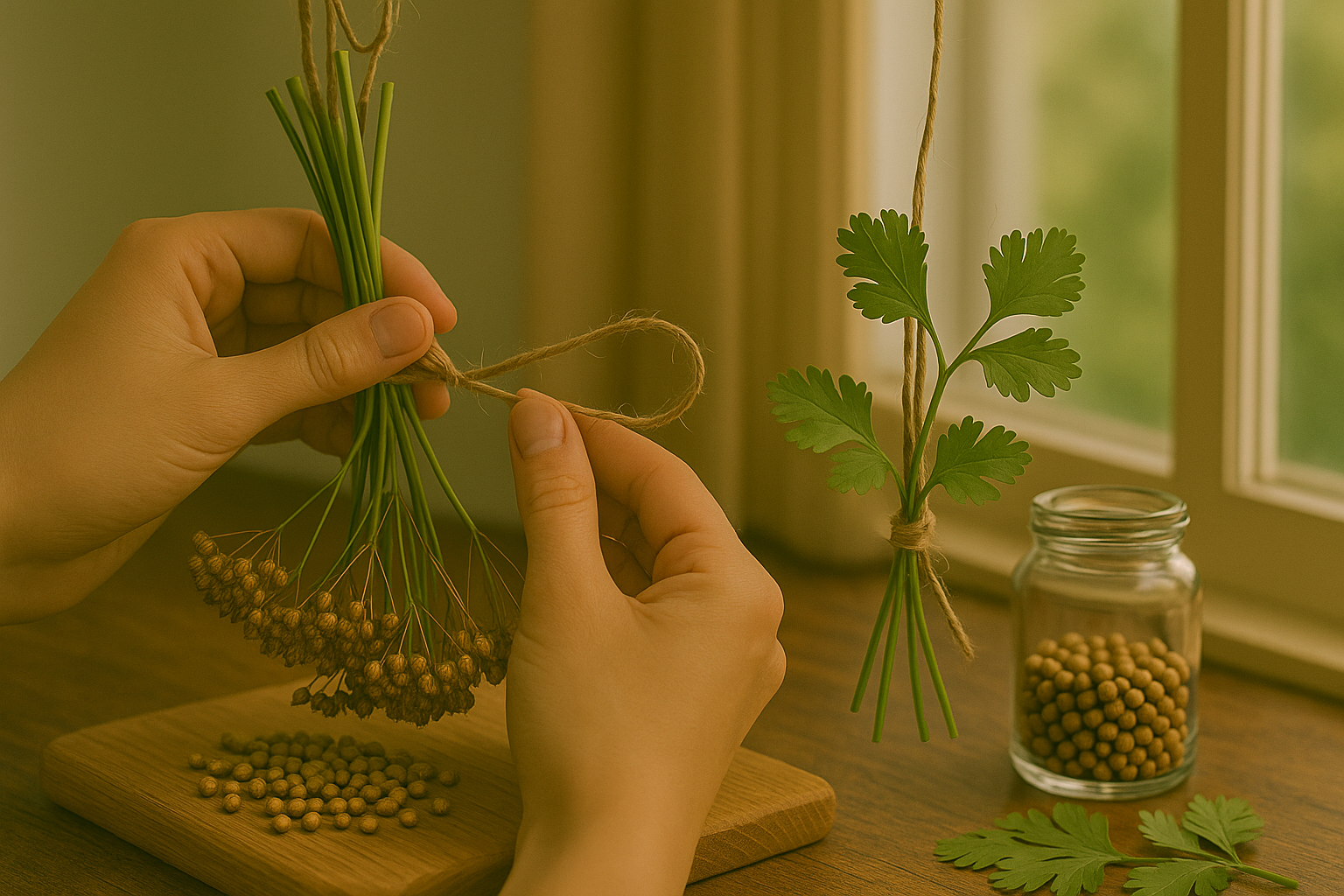
Letting cilantro, also known as coriander, bolt and produce seeds is straightforward if you give the plants a bit of patience and the right conditions. Simply stop harvesting the fresh leaves as the weather warms up. Bolting naturally happens in late spring or early summer when temperatures rise, causing tall flower stalks to appear.
These white or pinkish blooms will soon turn into clusters of green seed pods. Allow the stalks to fully mature and dry out on the plant until the pods turn brown and brittle.
When you’re ready to harvest, pick a dry, sunny day and gently pull the entire plant from the soil. Handle with care, as mature seed pods can shatter and spill if jostled too much.
Next, shake off any excess dirt and bind a few plants together using twine or an elastic band. Hang the bunches upside down in a cool, well-ventilated indoor spot away from direct sunlight—your garage, porch, or a shaded corner in the kitchen works great. Be sure to tie a paper bag around the heads to catch any seeds that fall while drying.
After about two weeks, the plants should be completely dry, making seed separation much easier. To collect the seeds, hold the stems over a clean, wide bowl or tray and rub the drying seed heads gently between your hands. Most of the seed pods will break open easily, releasing the coriander seeds.
For stubborn pods, try rolling them lightly between your palms or use a mesh sieve to help separate seeds from chaff. Pick out any last stems or debris, and lay your seeds in a single layer for another day or two to ensure they are completely dry before storing them in an airtight container.
This method helps guarantee flavor-packed, homegrown coriander seeds for your favorite recipes or next year’s garden.
Preparing and Storing Coriander Seeds
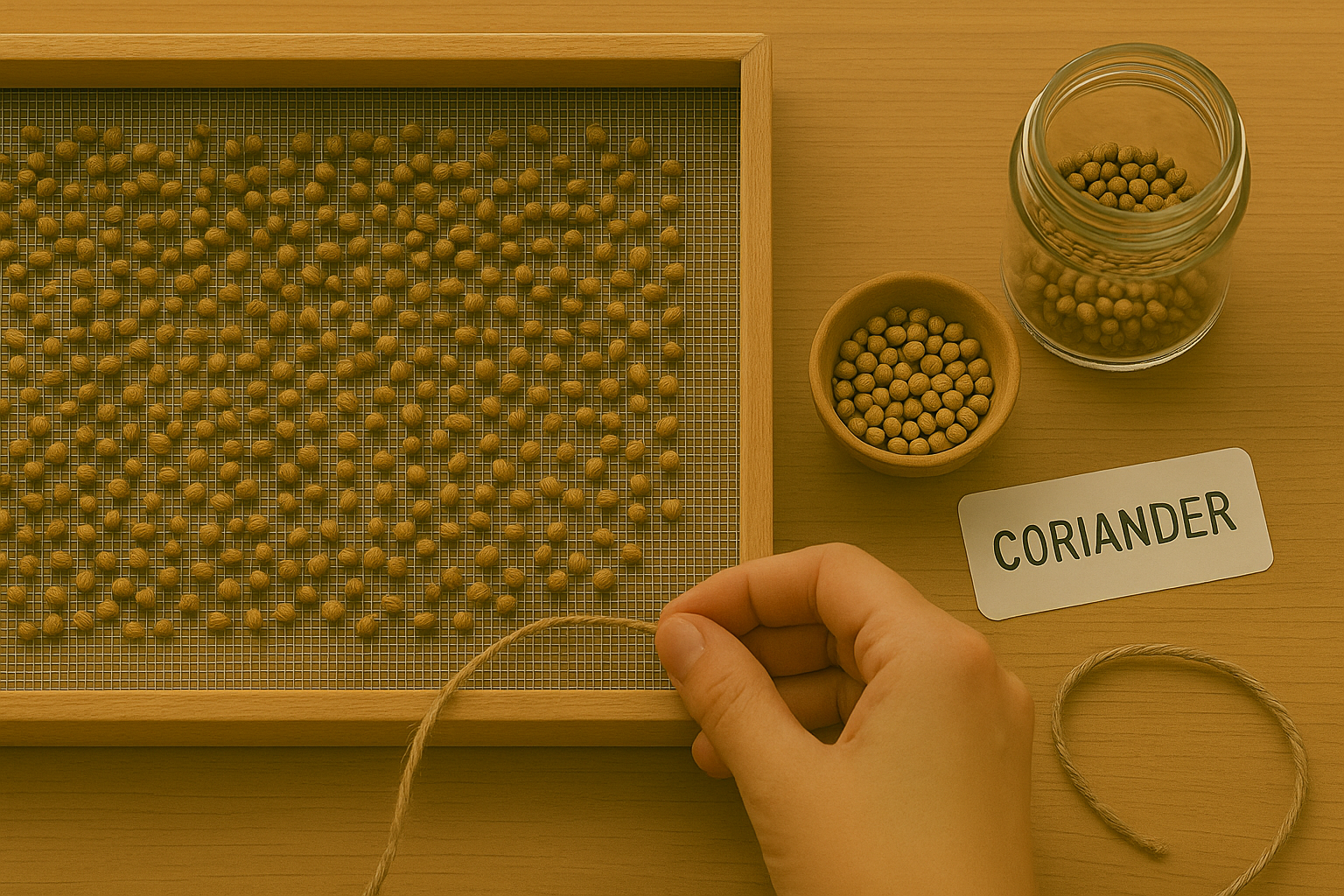
Properly preparing and storing coriander seeds ensures they stay fresh and viable for future use. After harvesting, spread the seeds in a thin layer on a clean, dry surface—like a baking tray or fine mesh screen—in a well-ventilated, shaded area.
Allow them to dry for about a week, turning occasionally to avoid moisture buildup and mold. Once they’re completely dry, gently rub the seeds between your hands or against a piece of cloth to remove any husks and lingering debris. Sift the seeds and pick out any remaining plant material so only the clean, round seeds remain.
For storage, use airtight containers such as glass jars or sealed plastic bags, and keep them in a cool, dark cupboard to protect against heat and light that can reduce viability. It’s also helpful to label containers with the seed type and date collected, so you can track how fresh your seeds are—remember, coriander is best planted within one to two years for optimal germination.
These simple habits help prevent spoilage and ensure you always have healthy seeds on hand for the next planting season.
Creative Uses for Home-Collected Coriander Seeds
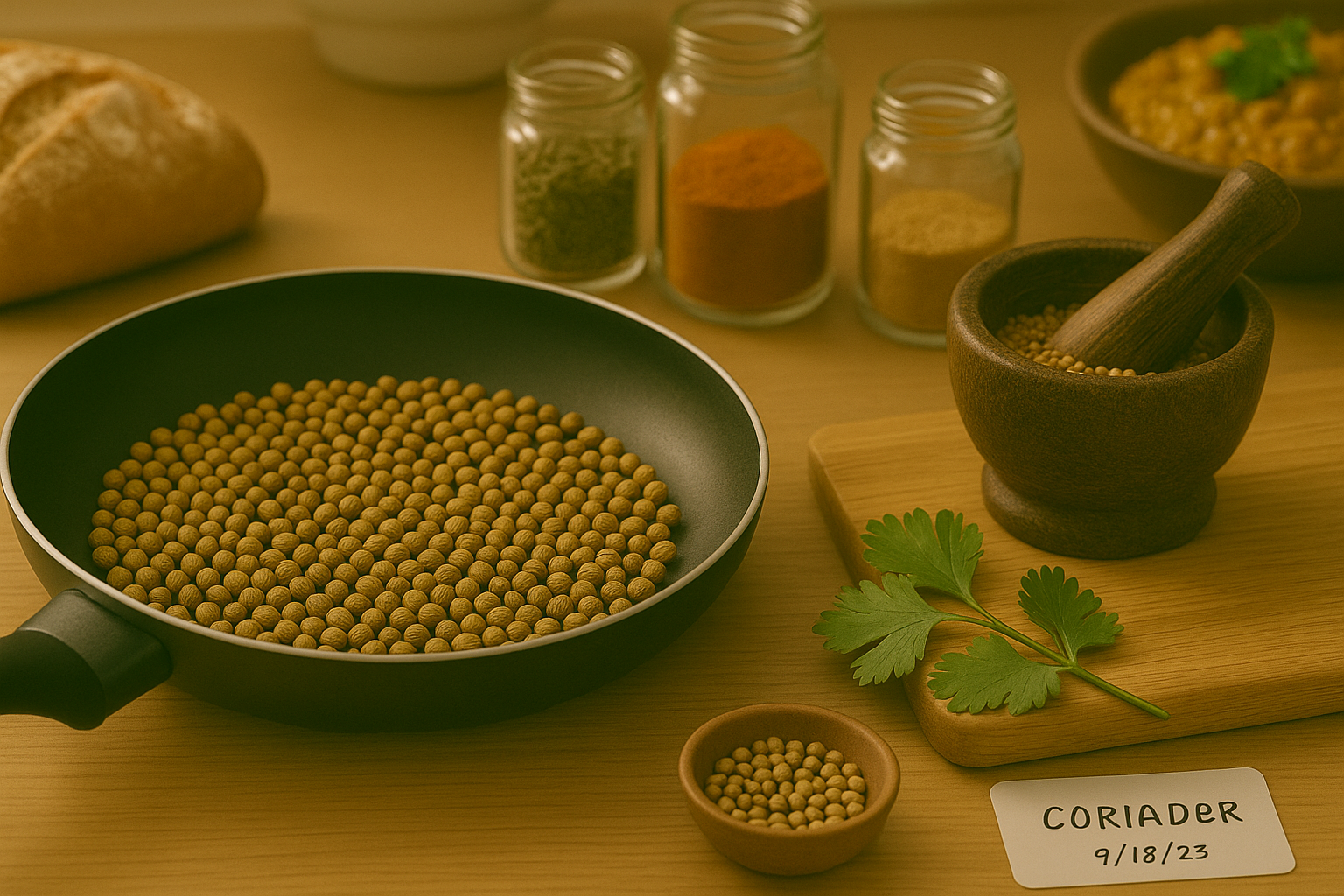
Home-collected coriander seeds can do so much more than just start your next garden—they’re a secret weapon in the kitchen. Freshly ground coriander adds a citrusy, warm note to curries, roasted vegetables, and even homemade breads. Simply toast a handful of seeds in a dry pan until fragrant, then crush them with a mortar and pestle to unlock their deepest flavors—this instantly elevates a simple lentil soup or a classic chicken rub.
Try mixing your ground seeds into yogurt-based marinades or blending them with cumin and fennel to craft your own unique seasoning blend for roasted potatoes or grilled meats. Whole coriander seeds are also perfect for pickling. Drop a spoonful into jars of homemade pickles, pickled onions, or carrots; the seeds impart a subtle, zesty depth that store-bought spices just can’t match.
If you make chutneys or vinegars at home, toss a few seeds in for a delicious twist. And don’t forget, sharing is part of the joy—beautifully packaged coriander seeds make thoughtful gifts for food-loving friends or fellow gardeners. You could even host a little swap with your gardening community, exchanging seeds and recipe ideas. Using and sharing your homegrown coriander is not just practical—it’s a way to savor and spread the fruits of your own creativity.
Tips, Troubleshooting & FAQs
If your seeds fall prematurely, don’t panic—quickly gather them and let them dry out of direct sunlight on a paper towel in a well-ventilated area. This helps prevent mold and preserves their viability.
To avoid common problems, check your plants daily for pests. Look for holes in leaves, sticky residue, or visible insects, and respond promptly by removing pests by hand or using natural solutions like neem oil.
Humidity is another critical factor. Use a hygrometer to monitor levels and improve airflow with small fans if needed, aiming for 40-60% humidity during drying and storage.
Poor germination is often caused by old or improperly stored seeds—always keep your seeds in a cool, dry, and dark place, ideally in an airtight container.
Beginners often ask, “Why aren’t my seeds sprouting?” This is commonly due to planting them too deep or overwatering. Plant seeds just below the surface and keep the soil evenly moist, not soggy.
- How long do seeds last? Most seeds remain viable for 1-3 years with proper storage.
- Can I reuse soil? Yes, but only after sterilizing it to kill pests and diseases.
Staying attentive throughout the growing process and following these tips will give your seeds the best chance to thrive.
